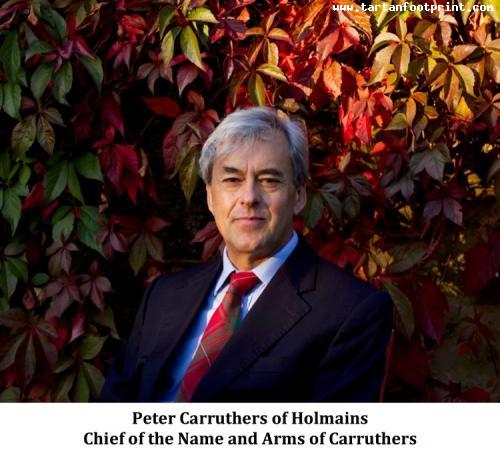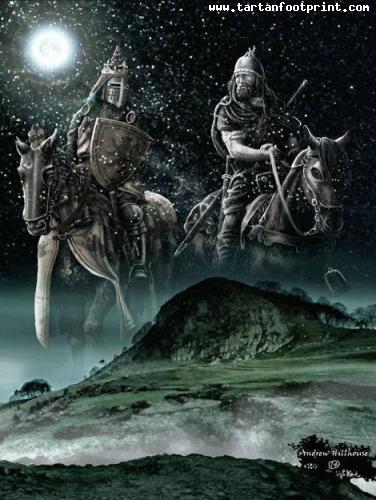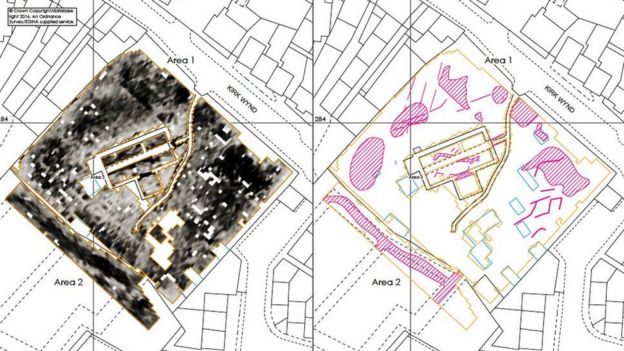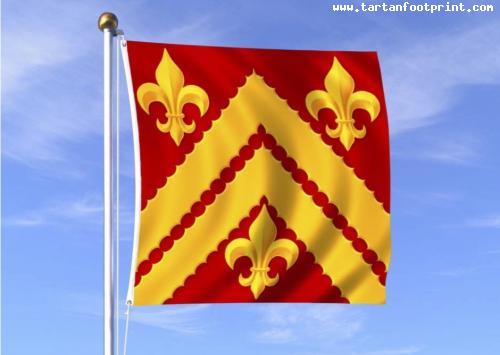
Chief of the Name and Arms of Carruthers
The Clan Carruthers Society International is extremely pleased to announce that Carruthers, after 210 years, has again a recognised Chief.
img-1292_1_...Chief of the Name and Arms of Carruthers
The Clan Carruthers Society International is extremely pleased to announce that Carruthers, after 210 years, has again a recognised Chief.
img-1292_1_orig.jpgDr. Simon Peter Carruthers of Holmains has been recognised as Chief of Clan Carruthers by the Lord Lyon King of Arms, Dr Joseph Morrow, CBE, KStJ, QC, DL, LLD, the arbiter in determining chiefships through the confirmation of the right to bear the hereditary Chiefly Arms of a Scottish clan or family.
In a Decision issued on 19th August 2019 and published on 9th September 2019, the Lord Lyon found Peter; “entitled to be recognised in the name, style and title of;
’Simon Peter Carruthers of Holmains, Chief of the Name and Arms of Carruthers’
and maintained, ratified and confirmed the undifferenced Arms of Carruthers of Holmains c. 1672”.
This Decision followed nearly 20 months of proceedings before the Lord Lyon, including two hearings of the Lyon Court in Edinburgh. The last of which was held on March 2019, at which Dr. S. P. Carruthers was represented by Sir Crispin Agnew of Lochnaw, Bt, QC.
Dr. Carruthers succeeds his fourth great-grandfather, John Carruthers, 12th of Holmains & Kirkwood (died 1809), the last recognised head of the Carruthers family. John 12th was a direct descendant of the first chiefs of Carruthers, dating back to the 13th century.
The Carruthers are an ancient Scottish family from Annandale in the Anglo-Scottish Borders. They were one of the Scottish ‘unruly clans’ named in the 1587 Act of the Scottish Parliament and the Laird of Holmains (Holmends) was one of the chiefs listed. From their origins in Dumfriesshire, Carruthers have spread across the world and are today represented in every continent.

Today! The Society of William Wallace hosts the Loudoun Hill commemoration.
Ghosts of Loudoun Hill – Robert the Bruce, William Wallace
Both Robert Bruce and William Wallace fought significant eng...Today! The Society of William Wallace hosts the Loudoun Hill commemoration.
Ghosts of Loudoun Hill – Robert the Bruce, William Wallace
Both Robert Bruce and William Wallace fought significant engagements with the English early on in their respective careers at Loudoun Hill, East Ayrshire. Loudoun Hill is a very distinctive volcanic plug located near the head of the River Irvine, east of Darvel. At its foot ran the ancient Roman road linking the Clyde valley with the Ayrshire coast, making it an ideal location for ambush.
Both engagements proved to be hard fought victories for the Scottish patriots. The success of the skirmishes boosted the reputations of both men amongst the hard pressed and brutalised population suffering under separate English occupations. Fighters subsequently flocked to the banner and the fight for independence gained momentum. Photo by Andrew Hillhouse...
Awesome..
BBC Scotland
The little island in Stirlingshire that provided sanctuary to Scotland's Kings and Queens 👑🤴🏻👸🏻
Just in.....you can now order a t-shirt or coffee cup along with lots of other Carruthers branded items. Just go over to the website above and check it out!
Carruthers Coat of Arms Meanings and Family Crest Artwork
View the world's largest online library of coat of arms meanings and artwork. Family crest and coat of arms information for the surname Carruthers.
Interesting research going on over on the Carruthers blog....
Ancient church where William Wallace was named Guardian of Scotland is uncovered in Selkirk
ARCHAEOLOGISTS have found the remains of the Borders kirk where Wallace was recognised after victory over the English at the Battle of Stirling Bridge in 1297. The historic event occurred after he
Step on over to Twitter and join us...
CLAN CARRUTHERS (@clancaruthers) | Twitter
The latest Tweets from CLAN CARRUTHERS (@clancaruthers). History/Research. International.
We also have a blog with all our connections in one place. A lot of information and even membership to the Clan Carruthers Society International.
CARRUTHERS FAMILY HISTORY
If you sit and listen you can hear the whispers
Arms are easily rendered as personal or house banners. Here the Carruthers of Holmains banner takes flight.
See 1 more posts from Clan

Carruthers: Our History through our Arms
According to four mediæval armorials, the earliest recorded arms of the Carruthers family were those of Carruthers of Mouswald who bore a golden shield with t...Carruthers: Our History through our Arms
According to four mediæval armorials, the earliest recorded arms of the Carruthers family were those of Carruthers of Mouswald who bore a golden shield with two black (or in one instance blue) engrailed chevrons. It is likely that these arms were borne by the head of the name from as early as the 13th century when shields of arms began being used by members of the landowning classes.
Some of these armigers may have had their arms painted upon their shields (if they had such hardware) and the wealthier would have had them carved on to seal matrixes or seal rings. Only the great peers had crests and other external ornament as part of the coats of arms but one suspects that the Carruthers were of more modest means being a small family on one of the hardest fought-over borders in Christendom. The arms devised for the Carrutherses by the mediæval heralds bore a striking similarity to the arms of another family of the Southwest, the McClennans whose shield was also gold but with plain black chevrons. The blue chevroned armorial was recorded in blazon by William Pont and it was possibly a blazoning error by the author. Due to the lack of heraldic regulation in those days several members of the same family might have borne the same shield, which could lead to confusion on the battlefield but one suspects at the time one Carruthers was just as worthy as another Carruthers in the fray so identity was not a problem.Heraldic colours or tinctures are known by their ancient French names thus gold is Or, black is Sable and Blue is Azure. Gold and silver (Argent) are metals and the other common colours are red (Gules) and green (Vert). The edges of the chevrons are ornamentally drawn in a pattern known in heraldry as engrailed.
Although ‘of the Mouswald’ line, the 16th century celebrated border knight Sir Simon Carruthers did not use these patronymic arms but is recorded in several armorials as using a red shield with a plain chevron between three fleurs-de-lis the charges variously in gold or silver. Such arms must have brought him into dispute with the myriad of Broun and Browne families who bore similar, if not identical arms. Simon was the chief of the Carruthers family and used the territorial designation ‘of Mouswald’ so it is unsure why he did not use the ancient Mouswald arms. Sir Simon fell during a border raid in 1548 leaving no sons. His two daughters immediately fell under the influence of the all powerful Douglas family and the chiefdom passed quick through several close relations who were pressured by the Douglases into signing over the Mouswald lands. Thus fell the line of ancient Carruthers chiefs and the chiefdom of the Carruthers went eventually to the cadet branch of Holmains.
Five ancient armorials, record the arms of Simon Carruthers, two favour gold charges (fleur d-lis), two favour silver charges, the fifth favours a silver chevron with gold fleur d-lis. The sheild to the left bears the same arms as those of the Brouns of Carsluith, the head of which house was yje powerful Abbot of Sweetheart Abbey.
Picture
The Arms of Holmains .
During the ninety years following the death of Sir Simon Carruthers, the new chiefly line of Holmains saw some rationalising of their arms as Simon had been using the same arms as those of the Brouns of Carsluith and Coulston, whose were principles of that name. Holmains appear to have had the arms of Sir Simon and the ancient arms of Mouswald combined to make a new armorial with a red field charged with two engrailed chevrons between three fleurs-de-lis, the charges all in gold. In the language of the heraldic blazon; Gules two chevrons engrailed between three fleurs-de-lis Or. The heraldic turmoil of some five centuries was brought to order with passing of what is known as the Lyon Act of 1672 which required that the Scottish King of Arms, the Lord Lyon, and his heralds keep a permanent ‘Register of All Arms and Bearings in Scotland’. The heralds were given a year to record in the new register all arms of those entitled to bear arms and to grant or matriculate new arms to those found “virtuous and well deserving”. John Carruthers 9th of Holmains recorded in the Register these arms which are now the principal and chiefly arms of the name Carruthers.
We have the prophet Isaiah to thank for his vision of Heaven and the seraphim quoted in the Bible; “Above him were seraphs, each with six wings: With two wings they covered their faces, with two they covered their feet, and with two they were flying.” Such creatures were certainly painted on the wall of churches throughout the British Isles until the reformation blotted them out and their form was lost to post-reformation painters. It will be noted that seraphim are mostly depicted with pinkish-orange wings with golden halos. However, in modern western society, most all heavenly creatures are
depicted in glowing, clean white.
Picture
A contemporary serephim from the Eastern Orthodox church.
Picture
Using the double barrel name Mitchell-Carrthers
It is doubtful that the Holmain armigers ever used a true Seraphim as a crest. In the 1672 Register, there were no illustration and the arms are recorded only in blazon but John Carruthers would have been given a ‘receipt’ with an simple drawing on it so those who could not read a blazon could copy it. One suspects the engraver who made John Carruthers’ bookplate was indifferent to the supposed appearance of the seraphim and produced a winged cherub’s head crest as can be seen to the left.
The male line of the Holmains failed early in the eighteenth century with the death of the 12th laird leaving the house with four surviving daughters. The youngest sister set up a trust in 1836 for the benefit of a list of heirs, namely her nephews, sons by her older sisters, whereby, in order of succession, they could benefit financially from the trust if they would change their surname to Carruthers and matriculate the Holmains arms.
The first to take advantage of this in 1854 was Major John Peter Wade of the Honourable East India Company Service. He took the additional surname as Carruthers Wade and matriculated arms at the Lyon Court quartering Wade arms in the first and fourth quarters and the undifferenced Carruthers of Holmains arms in second and third. I am not sure that in hindsight that this is what was intended when the trust was set up as it appears the intention was to preserve the chiefship in the immediate family and by retaining the Wade surname the good Major eliminated himself from becoming the chief because he had a different surname.
However, Major Carruthers Wade died without issue (leaving any heir) in 1873 and the line of succession passed to his cousin, the Reverend William Mitchell. He too changed his name by adding Carruthers to become the Reverend William Mitchell-Carruthers. Subsequently he too matriculated but with the Carruthers coat in the first and fourth and a newly devised Mitchell quartering in second and third.
Picture
Arms of Major John Peter Carruthers Wade
Picture
Arms of the Rev. Wiliam Mitchell-Carruthers
The Reverend Mitchell-Carruthers also missed the mark as far as the chiefship would be regarded today by using the Mitchell hyphenated in the surname : Mitchel-Carruthers, as he already had a thriving family with a number of sons who may have benefited from the trust.
Oddly, the Lyon King of Arms matriculated his arms with a differenced Holmains quartering with chevronels rather than chevrons. The chevronel is a lesser chevron thus narrower, which is good for heraldic artists as it allow more space on the shield for bigger fleurs-de-lis but is none the less a difference that the Reverend William did not need to have.
It would of course be possible for a Mitchell-Carruthers of the line, either male or female, to make themselves eligible to become chief of the clan by dropping the Mitchell part of their surname and proving that they were the eligible heir to the chiefdom and thus showing that there are no better claimants in the field. They would then have to present their proofs to the Lyon King of Arms who if satisfied, would matriculate the 1672 registered arms anew and the Carruthers would have a recognised chief of the name amd legal standing as a clan.
Picture
At the time that the new Register of All Arms and Bearings in Scotland was begun in 1672, a James Carruthers who was the Steward Deputy and Factor (land agent) to the Earl of Annandale, recorded his arms. They were the same as those of John Carruthers of Holmains but all within a bordure Argent (a silver border). This would seems to indicate that James was very closely related to John, possibly a younger brother, at worst a cousin. He also made small differences to his crest by choosing a standing seraphim rather than flying and he chose ‘Paratus et Fidelis’ for his motto, thus; prepared and faithful rather than, prompt and faithful. James’s lineage does not seem to have survived.
Picture
When Major Francis John Carruthers of Dormont, late of the Kings Own Scottish Borderers, decided to matriculate arms in 1913, fully eleven generations of his family had lived at Dormont since his ancestor, William Carruthers, second son of John Carruthers 5th of Holmains had obtained a charter from his father to the lands of Carsophland in 1553. Carsophland later expanded to include Dormont and when Major Francis retired from the army and he collected together the charters and records of the estate to present to the Lyon, King of Arms with his petition to matriculate the ancient arms of his ancestor.
Of course, the Register had not existed until 1672 when Holmains registered, but his arms were assumed to have existed in the sixteenth century when in all reality the Holmains were probably still deciding whether to use the ancient Mouswald arms or those of Sir Simon Carruthers who they were succeeding. However, the Lord Lyon, Sir Francis Grant matriculated arms for Major Carruthers with differences of chevronels and a bordure Or (golden border). These arms were painted on the major’s Letters Patent by the great heraldic painter A. G. Law Sampson with probably the first ‘accurate’ depiction of a seraphim crest ever to grace a Carruthers armorial. Dormont retained the original motto as is common in Scottish heraldry. The one thing Major Francis did not do however was to make a claim to the chiefship of the name, which suggest he may have thought that there were others who had a better claim to to the position
Picture
In November 1965, arms were matriculated by the Reverend Arthur Stanley Carruthers. He had shown that he was a cadet of the family of Carruthers of Dormont, itself having descended from the second son of John Carruthers, 5th of Holmains. The matriculated arms are contained within a Stodart style border to indicate the position of Arthur Carruthers within the family; the border is divided into two parts and charged twice to show the complexity of the relationship with the Dormont line. The shield is ensigned with the black hat with a pair of single tassels which may be used by a churchmen in place of a crest. Again the traditional Carruthers motto was retained.
The Stodart system of bordures was devised at the turn of the nineteenth century to provide a consistent method of differencing arms within a family where there were many armigers matriculations. However, the system has its drawbacks and can get very complicated ending in some quite unattractive armorials. The Reverend Arthur seems to have got off quite lightly with his border parted per pale Or and Azure and charged with a martlet and crescent.
Picture
Arms of Dr. G. Carruthers.
In 2016, Dr George Carruthers, a native of Dunfermline in Fife started the process of petitioning for a new Grant of Arms in 2016, which were duly granted early in 2017. George had not sought to gather proof that his father’s line had descended from any past or current armigerous Carruthers family so his only course to arms was by way of a grant.
Granted arms for a particular surname have to be based on the chiefly arms but have two significant differences from the chiefly coat; in George’s case this would be the replacement of the bottom fleur-de-lis with a pheon (an arrow or spear head representing his Reiver ancestry and their use of the 'Lang Spear".) and the less noticeable difference of chevronels as opposed to chevrons. He has kept to the angelic theme of all Carruthers crests choosing ‘the Archangel St Michael pinning the beast’ and has also chosen a more personal motto NON STO SOLUS -
I do not stand alone, representing his personal beliefs, the closeness of his family and once again the reiver ancestry.
The use of the difference of chevronelles on his arms, rather than chevrons, follow previous Carruthers armigers after Holmains. Dr George Carruthers was only the seventh Carruthers to officially register arms in Scotland.
Any Carruthers, Scottish born or resident, may petition for Scottish arms through the Court of the Lord Lyon. Such petitioners should of course be ‘virtuous and well deserving’ and will have to meet certain residency criteria. Carruthers within and outwith Scotland who can prove their descent from one of the armigerous Carruthers families can petition for a matriculation of an ancestor’s arms with ‘congruent differences’ which means they would have a shield with a coloured border or additional or slightly different charges. Those who cannot prove descent from one of the armigerous families can petition for a new grant of arms but, like George above, their new arms would be based on the chiefly arms of Holmains.
Acquiring arms through the Court of the Lord Lyon is not hugely expensive and certainly worth the effort of investigation.
Picture
If you are not an armigerous Carruthers therefore with no arms of your own, you can of course wear a clansman’s badge made of white metal, be it silver, nickel, polished pewter or a base metal. The clansman’s badge consists of the chiefly crest on a wreath inside a buckled belt upon which is inscribed the chiefly motto. The end of the belt loops through the encircling belt and hangs down the front. Of the many such clansman’s badges available commercially it would seem that none have ever been made for the surname Carruthers.
Illustrated on the right is how a Carruthers clansman’s badge might appear. The chiefly crest is the seraphim, its angelic face enriched with a halo encompassed within six wings, one pair covering the head, another pair covering the body and a wing spread on either side for flight as the chiefly seraphim is of course ‘volant’, i.e. flying. The motto on the belt is the Latin text ‘Promptus Et Fidelis’ which translates exactly as ‘Prompt and Faithful’ but more easily as ‘Ready and Faithful’.
The clansman’s badge can be worn by anyone wishing to show loyalty to clan or family, be they born into the name, married into the family or just accepted as part of the clan by the clansmen at large and their chief, if such a person is identified. The badge can be worn on one’s bonnet or lapel, as a part of highland dress. At this point as the Carruthers are lowlanders and borderers kilts would not have been worn but rather trews, however highland dress is now somewhat regarded as Scottish national dress and worn by all Scots and their descendants. The Clan badge can be made into fine silvery buttons, showy brooches or pins for one’s plaid or kilt but as noted above, it is always made in a white metal as mentioned above.
Picture
Picture
To the left is The Armigers bonnet badge with a single eagle feather of Dr G. Carruthers, to the right a proposed Chieftains bonnet badge with two eagles feathers for James Carruthers 13th of Dormont.
Similar to the clansman’s badge in concept, the armiger’s badge is exclusive to the armiger, the owner of any registered Scottish arms. They have their crest mounted on a silver circlet rather than the buckled belt. In Highland tradition when such a badge is worn on the bonnet, the armiger can wear an eagle’s feather (wing or tail) tucked in behind the badge to indicate they are a clan armiger.
A chief of a large branch of the family as in the case of Dormont and in the absence of an identified chief, then the current head of the cadet branch of the family might be regarded as a chieftain within the family and he could wear two eagle feathers in his bonnet or made protruding from behind his badge.
The chief of the clan wears three eagle feathers but in these more ecologically minded days, eagle feathers are hard to come by and are sometimes looked down upon by those minded of such matters. So armigers, Chiefs and Clan Chiefs usually have their badges made with small silver feathers extending from the edge of the circlet. In the case of the newest Carruthers armiger, Dr George Carruthers, he will have his bonnet badge made with his crest and motto and single feather mounted behind.
As can be seen in the accompanying illustrations, there is no set direction for these wee feathers. Rather like real eagle feathers, when worn they tend to be sent spinning around by the prevailing winds.
Picture
Armigers Wife's Cartouche
Picture
Armigers Daughter's Cartouche
Scottish heraldry is not solely for men. Scotland has long granted and matriculated arms for women in their own right. Also an armiger’s wife may display her husband’s arms on a cartouche, an armiger’s daughter is entitled to use her father’s arms on either an oval or lozenge-shaped cartouche during her lifetime.
Scots take great pride in their heritage, their history, tartans and heraldry. Recent years have seen a great many folk petitioning for personal arms, and all who are in right of such arms should make opportunities to show, wear and display their ensigns armorial. There is no snobbery in armoury as the socially anxious may fear. Armoury is not about pretence, it is primarily about identity. To the heraldically literate it shows who you are, it shows continuity from the past, from your forebears. It shows belonging, being part of a family and a name and most especially, it is colour. It is a celebration of the individual and the family for all to enjoy.
“Heraldry is the fury of history made wise and formal: from its hands we take at last the wholesome images—the heart’s bread—that our ancestors sowed for us in passion and blindness”
George Mackay Brown
Picture
Arms are easily rendered as personal or house banners. Here the Carruthers of Holmains banner takes flight.
Composed and illustrated by Anthony Maxwell, Heraldic Illustrator of Edinburgh, March 2017.
All images are subject to copyright. However, the Clansman’s badge is given freely to the Carruthers clan and family in the hope that it will be made real and cast in metal.
page=1&callback_module_id=pages&callback_item_id=459&year=&month=
View More


 Christina McFarland Helms likes this.
Christina McFarland Helms likes this. Christine Crapser likes this.
Christine Crapser likes this.













